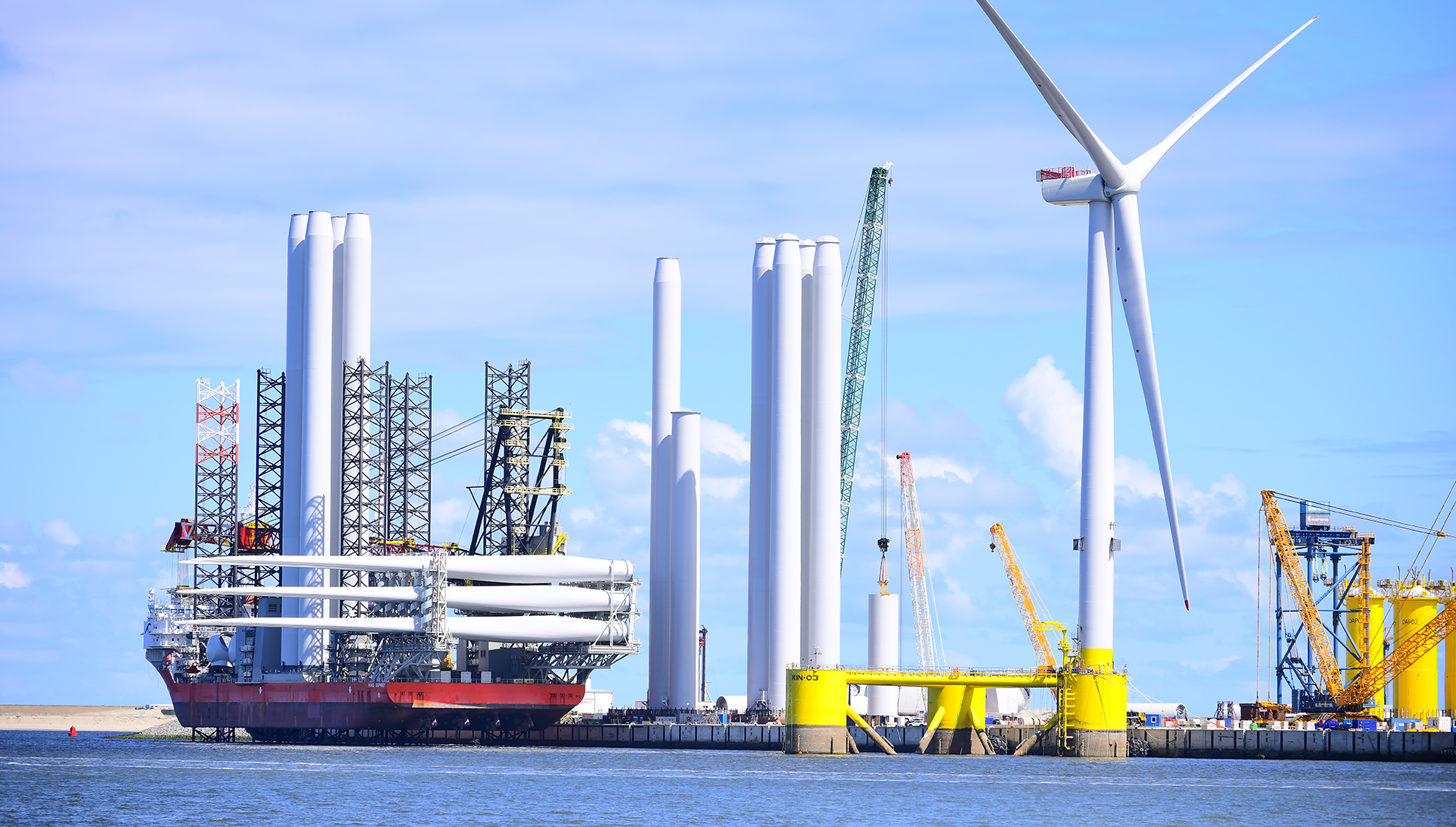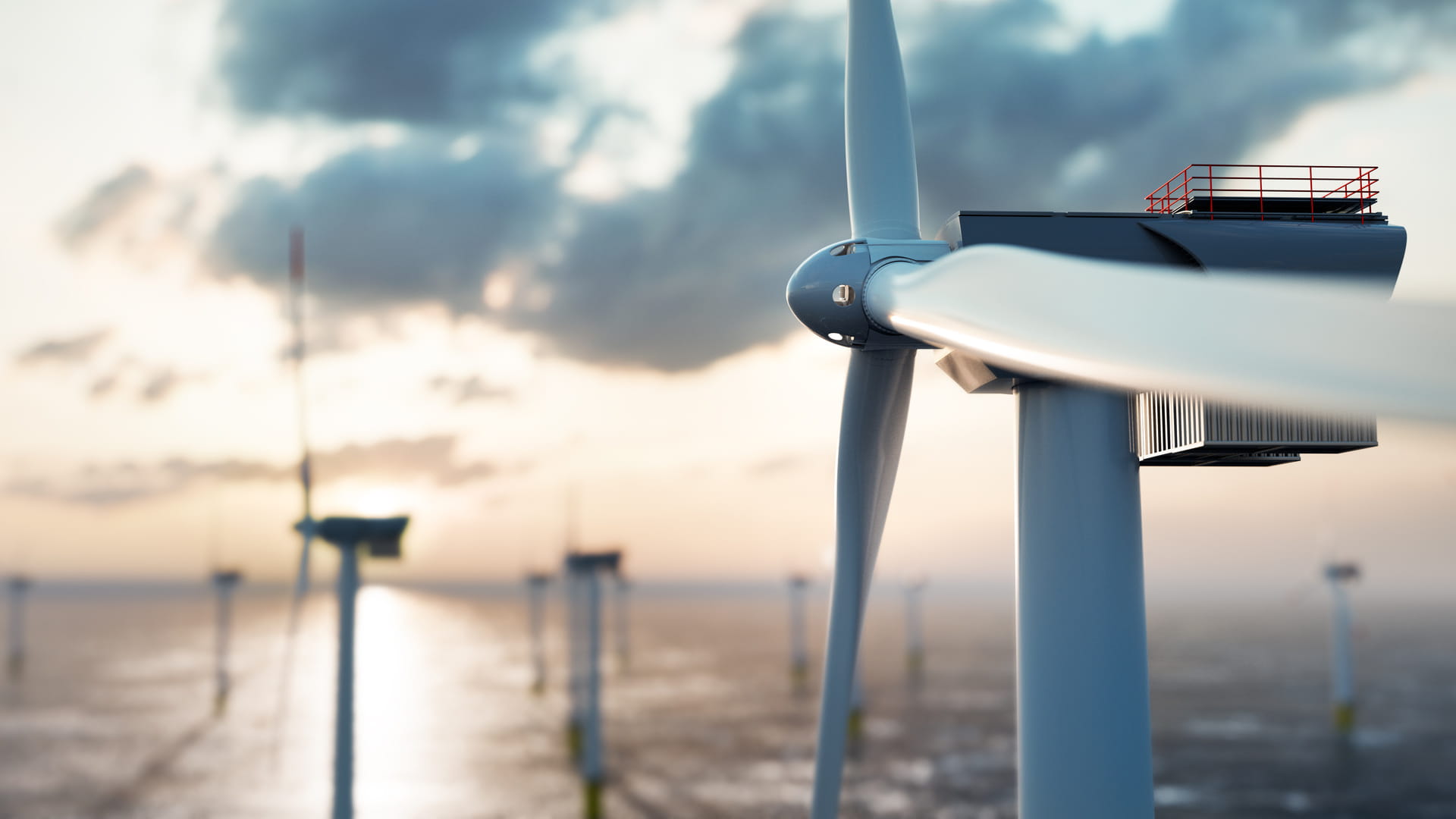5 key questions from aspiring wind ports, answered

The offshore wind market in Northwest Europe is growing fast, as are new markets in the Baltic, Mediterranean and Black Sea. This creates huge opportunities for European ports to diversify their offering and support a new industry. But it also presents significant challenges.
At Royal HaskoningDHV, we want to help ports capitalise on this market, gain new revenue opportunities, and play a key role in the global transition to more renewable energy. So, we’re answering five frequently asked questions to help ports in Europe and the UK adapt.
Five frequently asked questions facing aspiring wind ports
The challenges you’ll face will depend on the unique context and situation of your port – and the complexity of your operations.
In general, deeper berths and wider channels add complications. Furthermore, wind ports require quays to have more bearing capacity to deal with the increasing weight of components and turbines. But if the base envelope of your port can be maintained, upgrading it should be more than achievable.
Quay capacity and jack-up requirements can be higher for wind ports than existing operational limits. This is often the case for fixed bottom staging ports and can become a major constraint and cost. Available land area is also an important consideration, as ongoing port operations can limit storage areas.
Having the right consultant on board is crucial to properly plan for these potential limitations. They can help ensure you have the most appropriate technical specifications for the project and correctly define any future project developments or expansions.
Designing a successful wind port demands a combination of expertise in port engineering, shipyard design, manufacturing processes and production lines, market trends, commercial capabilities, and offshore considerations.
It’s also beneficial to have a broad understanding of global developments in offshore wind so you can apply learnings from other countries to your own specific environment.
In reality the time needed to develop a new or existing facility into a wind port will depend on a number of factors including the function that the port is planning to serve and the levels of existing infrastructure.
Regardless, the development of any significant infrastructure will encompass several stages that can have varying timeframes dependent on circumstances and regional planning requirements, as follows:
Strategic planning and feasibility studies – defining the strategic vision and goals for the wind port, followed by a technical and economic feasibility assessment to determine the viability of the scheme.
Consultation and regulatory approvals – undertaking an environmental impact assessment and engagement with relevant stakeholders, including government agencies and local communities. The time required to obtain the necessary permits and approvals from regulatory bodies can be highly variable and the entire process could take several years.
However, some facilities may have pre-existing development rights, so this process can also be relatively quick in some circumstances. Royal HaskoningDHV has expert teams in supporting EIA and consenting processes and we would be glad to provide further advice on this aspect.
Design and engineering – developing the maturity of the planned facility to establish detailed engineering designs will also depend on the size and complexity of the project, but typically this may be 3 to 12 months of work.
Construction – the procurement, tendering, and construction period could be in the range of one to three years. This duration will again be highly dependent on the scope of infrastructure to be delivered and how weather may impact construction windows for marine works.
The development of a business case and plans to secure funding and investment will also need to be considered in the overall project delivery plan. This could include government investment, private investment, and public-private partnerships.
This is a question of relative competitiveness. Vessels can certainly sail further to the offshore wind site, but downtime risk from poor weather, distances for other supporting vessels and the construction team, the likely availability of suitable vessels, and how your port realistically competes with others all come into play.
However, we can certainly provide some very good advice on the relative competitiveness and how wide a market your port should be looking to sell into. It’s also a really important consideration when establishing a business case for wider opportunities.
If the demand for offshore wind from ambitions, targets, and the current project pipeline is not translated into concrete port demand it will be almost impossible to develop a business case based on offshore wind activities.
Ports that have been successful have either entered this market from a manufacturing perspective – providing OEM backing and the ability to service a wider market – or have benefited from their location and available functional infrastructure that could service fixed bottom construction.
To build a solid business case for developing a wind port terminal at this point in time requires a good view on your potential role and volumes in offshore wind, combined with other activities that will provide continuity such as offshore oil and gas, cruise, and general cargo.
In the North Sea Energy Cooperation (NSEC) report we’ve proposed several instruments and solutions that would support the development of wind ports. These have been split into potential actions for public players, industry players and financial institutions, and both short-term actions and long-term efforts.
You can download and read the potential solutions here:
Webinar: Transforming your port into a wind port
We held a webinar discussing trends in the offshore wind market in the emerging European countries, what ports can do to meet demand and capitalise on the opportunity, and how to build a robust business case for offshore wind developments.
Watch our on-demand Offshore Wind Ports webinar to hear expert discussion of all of these topics.





